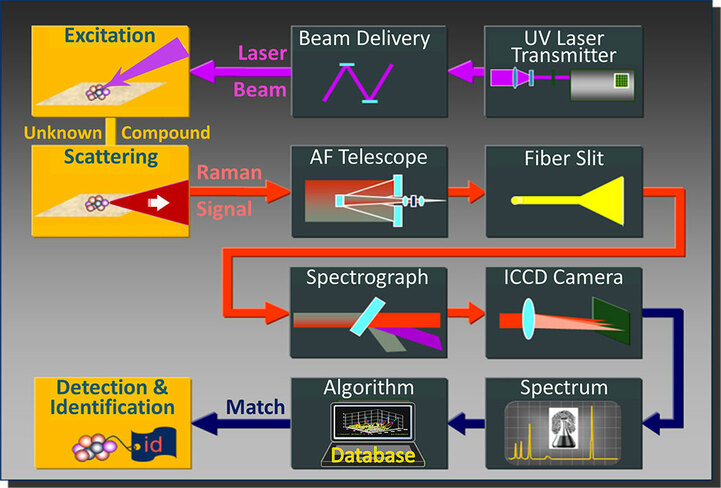Standoff UV Raman Spectroscopy
Raman Spectroscopy
UV Raman
The Raman spectrum is extremely weak, typically 1 part in 104 to 106 of the excitation intensity. But the Raman cross section itself is dependent on the excitation wavelength to the inverse fourth power resulting in higher Raman intensity with shorter wavelength laser excitation. This is one of the main advantages to using UV laser excitation for detecting agents on surfaces. Another advantage is that shifting to excitation wavelengths below about 250 nm actually shifts the Raman spectrum away from the tryptophan fluorescence band found in biological material. At higher wavelengths, the tryptophan fluorescence can obscure the weaker Raman signals. The final advantage to UV excitation is that Raman spectrum is manifest in the solar blind region of the spectrum.



